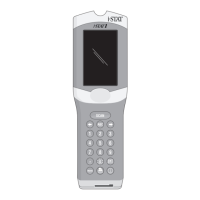THEORY
20
Art: 714382-00D Rev. Date: 02/20/06 20-1
ANALYZER FUNCTIONS
Introduction
The i-STAT 1 analyzer is a microprocessor-controlled electromechanical
instrument designed to:
• identify the cartridge type.
• control the flow of fluids within the cartridges.
• mix sample and reagent (where applicable).
• apply electrical signals to certain types of sensors within the
cartridges.
• control the temperature of the cartridge at 37°C (where applicable).
• measure electrical signals generated by the sensors (cartridge and test
strip).
• measure the barometric pressure of the surrounding environment
(where applicable).
• calculate concentrations of analytes using the generated electrical
signals.
• display the results in numerical values and on bar graphs (where
applicable).
• communicate the results to a printer and computer.
• sense and communicate operational errors.
• maintain an internal clock/calendar.
• store all test records, Electronic Simulator results and Quality Check
Codes and messages.
Microprocessor
System
The microprocessor control system manages all functions of the analyzer. It
accesses three types of memory storage devices. A “FLASH” EEPROM module
stores the software program in the analyzer. The RAM, which is backed up
by an internal lithium battery, is used for temporary storage of sensor signals
measured during operation and for storage of test records. Another EEPROM
stores factory calibration information, the instrument serial number and
cumulative count of uses. Neither of the EEPROMs relies on the lithium
battery for maintaining information.
Sensor Interface
Electrical signals from the cartridge sensors are conducted from the contact
pads on the cartridge, through the internal connector in the analyzer, to the
sensor interface circuit board. Electrical signals from the test strip sensor are
conducted from the contact bars to a sensor interface circuit board. These
circuits amplify the signals from the sensors so that they can be further
processed by the main electronic circuit board. Four signals are relayed to the
main electronic circuit board from the cartridge sensor interface circuit board:

